

|
There was a need for higher
energies than were possible in the mightiest particle accelerators
of the early 1960s, at Brookhaven in New York and at CERN in Geneva,
Switzerland. In 1962-63 an Atomic Energy Commission panel endorsed
"prompt construction of a 200 GeV proton accelerator." Simultaneously
an idea emerged in 1963 from Leon M. Lederman of Columbia University
for a "Truly National Laboratory" to expand participation
in national facilities beyond regional use. Led by representatives
of 34 of the major US research universities, Universities Research
Association, Inc. steered the recommendation through the highest levels
of government while coordinating a site selection process with the
National Academy of Sciences. More than two hundred sites from forty-six
states were proposed.
In December 1966, Weston, Illinois was announced the winner of "the
scientific prize of the century" and thus, the 200 GeV Accelerator
was born. |
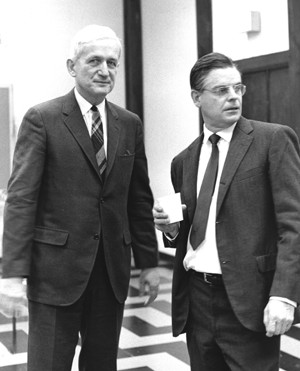
| Norman Ramsey and Robert Rathbun Wilson, two founding fathers. |
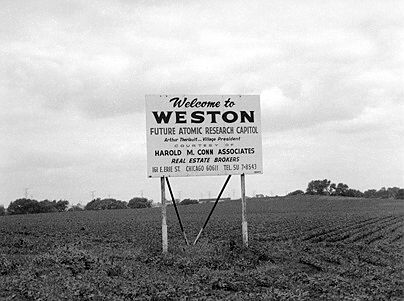
| Weston hoped to grow with the National Accelerator Laboratory. |

| There were over two hundred proposals for the new laboratory. Here are a few such proposals. Green: California. Beige: Ohio. Mountains: Colorado. White: Illinois. Back |
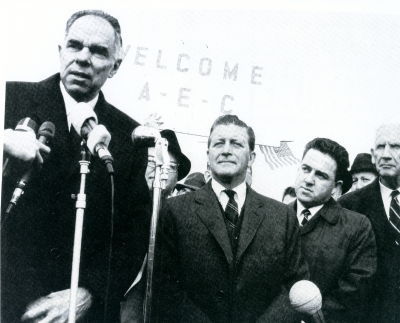
| The April 1, 1966 Site Inspection of Weston, IL. From the left: Glenn T. Seaborg, AEC Chairman, Governor Otto Kerner, Village President Arthur Theriault, and Senator Paul H. Douglas |
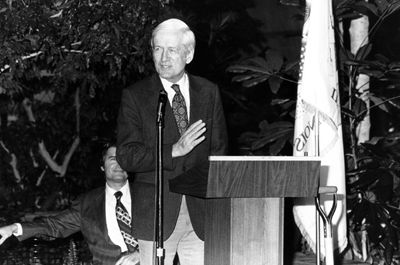
| Norman Ramsey led the General Advisory Committee to the Atomic Energy Commission and later was President of Universities Research Association. |
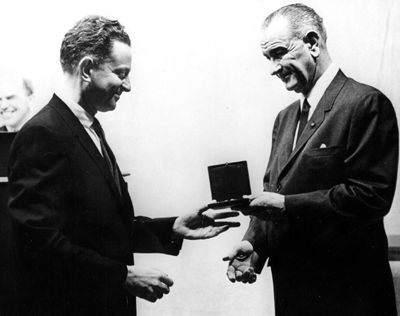
| Leon M. Lederman, who supported a national laboratory, receives the National Medal of Science from President Lyndon B. Johnson in December, 1965. |

| The Ramsey Report advising the AEC. |

| The seal of the Joint Committee on Atomic Energy. |